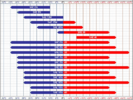I think the engineers have spoken by not speaking. Honda makes no mention of using synthetic oil in any of my Honda two-wheelers. The don’t say you can’t, and they don’t say you can. If Honda made it an option to use synthetic oil, and as a result the oil change intervals were specifically extended by using synthetic, it might in some cases be worth it going that route. The extended change interval could offset the higher price of synthetic oil. But, such is not the case, so no synthetic for me. It has no advantages to justify it’s typically higher price.I would agree, Greg.
However, I would stay away from synthetic and stick to straight mineral oil.
It is unnecessary IMHO, and may not be the best diet for the clutch (clutches in the DCT).
I would really like to hear what the engineers in Japan have to say about that.
Uh-oh. I am perpetuating an oil thread. THE dreaded oil thread. My appologies.





